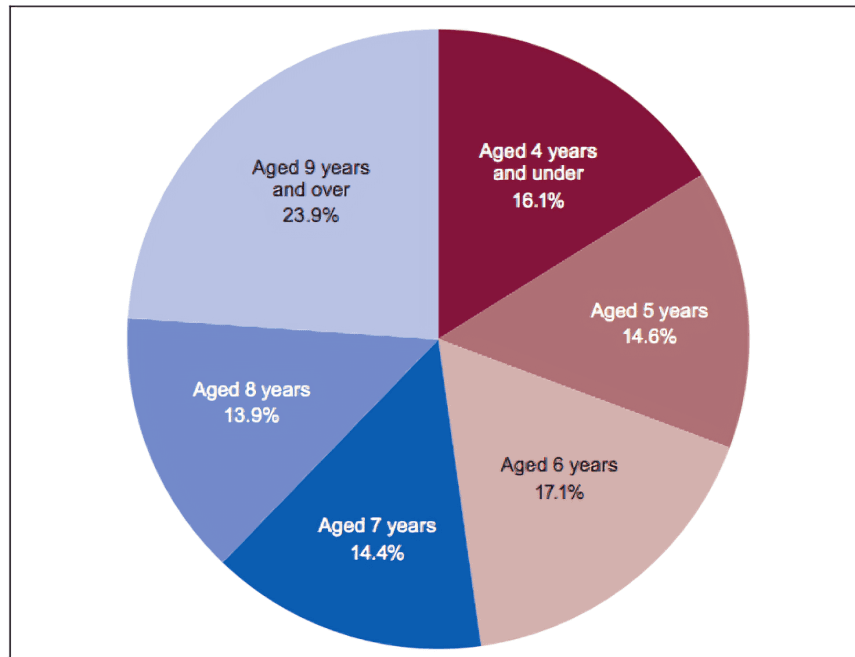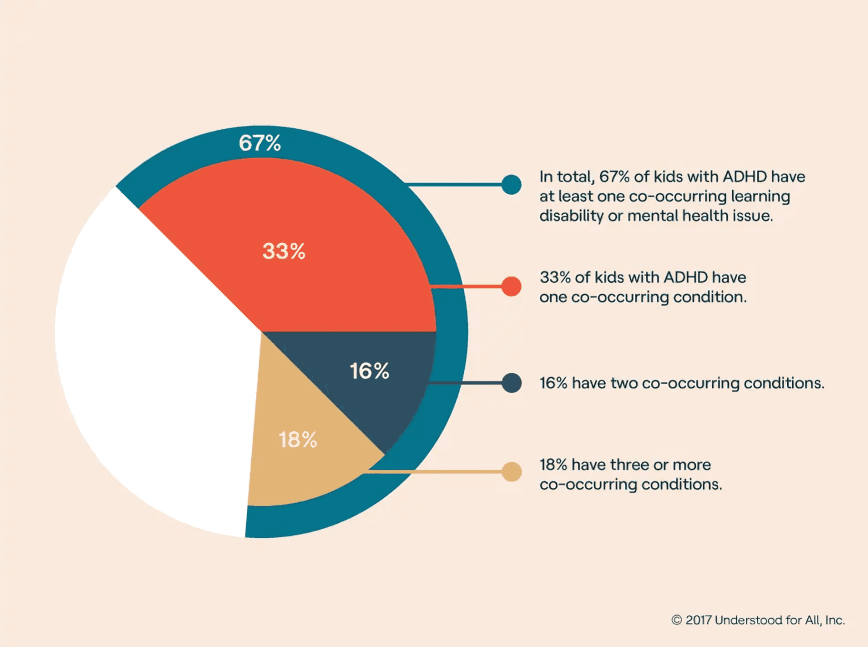
“
ADHD in children and adults affects millions of lives worldwide, shaping behavior, focus, and emotional regulation. This neurodevelopmental condition presents differently across age groups, but recognizing its symptoms, causes, and coping strategies is key. 1
1
”
ADHD, or Attention Deficit Hyperactivity Disorder, is a neurodevelopmental disorder marked by ongoing inattention, hyperactivity, and impulsivity, often starting in childhood and continuing into adulthood. 1
Globally, ADHD affects approximately 7.2% of children under 18, making it one of the most prevalent childhood psychiatric disorders. In the United States, about 9.4% of children have been diagnosed with ADHD. 2
ADHD is not exclusive to children; about 4.4% of American adults are diagnosed with the condition. Many adults remain undiagnosed due to misconceptions that ADHD only affects children. 3

The average age of ADHD diagnosis in children is around 7 years old. However, symptoms can appear as early as age 3, emphasizing the importance of early observation and intervention.
ADHD often coexists with other mental health conditions; approximately 60% of children with ADHD have at least one additional disorder, such as anxiety, depression, or learning disabilities. 4
In adults, ADHD is frequently accompanied by other psychiatric conditions. Studies indicate that adults with ADHD are more likely to experience mood disorders, anxiety, and substance use disorders, complicating treatment. 5
Gender disparities exist in ADHD diagnoses; males are almost three times more likely to be diagnosed than females. This discrepancy may be due to differences in symptom presentation and societal expectations. 6
ADHD has a significant genetic component. Children with a parent who has ADHD are more likely to develop the disorder themselves, indicating hereditary influences. 7
Treatment for ADHD often includes medication, behavioral therapy, or a combination of both. Stimulant medications are commonly prescribed and have been shown to be effective in managing symptoms. 8
Behavioral therapy is particularly beneficial for children with ADHD, helping them develop coping strategies and improve social skills. When combined with medication, it can enhance overall treatment outcomes. 9
Early diagnosis and intervention are crucial in managing ADHD effectively. Timely treatment can improve academic performance and social interactions and reduce the risk of developing additional mental health issues. 10

ADHD can impact academic achievement; children with the disorder are more likely to experience difficulties in school, including lower grades and an increased risk of dropping out.
Adults with ADHD may face challenges in the workplace, such as difficulties with time management, organization, and maintaining attention, which can affect job performance and career advancement. 11
The economic burden of ADHD is substantial. In the United States, the annual societal cost associated with ADHD, including healthcare, education, and lost productivity, is estimated to be between $143 and $266 billion. 12
Sleep disturbances are common among individuals with ADHD. Problems such as insomnia and irregular sleep patterns can exacerbate ADHD symptoms and affect overall well-being. 13

Comorbidity with learning disabilities is prevalent in ADHD; approximately 30-50% of children with ADHD also have learning disorders such as dyslexia or dyscalculia, impacting academic performance.
ADHD symptoms can differ between genders. While boys often exhibit hyperactivity and impulsivity, girls may display inattentiveness, leading to underdiagnosis or misdiagnosis in females. 14
ADHD can affect social relationships. Children and adults with the disorder may struggle with interpersonal interactions, leading to difficulties in forming and maintaining friendships or romantic relationships. 15
Physical health can also be impacted by ADHD. There is a higher incidence of obesity and related health issues among those with the disorder, possibly due to impulsive eating habits and lack of routine. 16
ADHD symptoms can persist into adulthood for many individuals. Approximately 35% to 78% of children diagnosed with ADHD continue to experience symptoms as adults, affecting various aspects of life. 17


